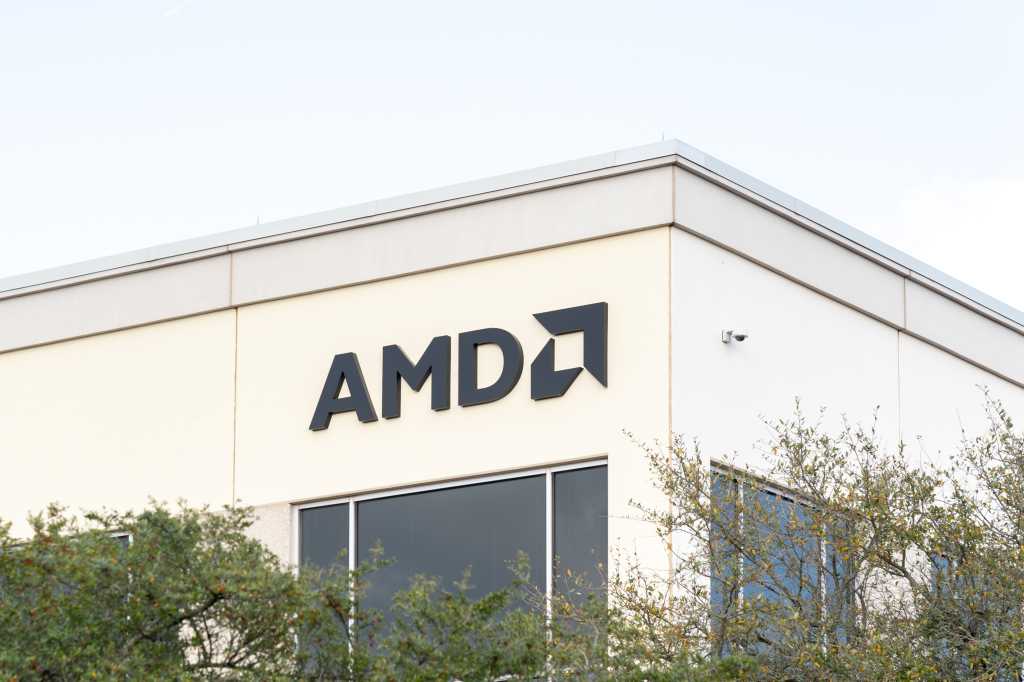The computer first appeared on the Broadway stage in 1955 in a romantic comedy—William Marchant’s The Desk Set. The play centers on four women who conduct research on behalf of the fictional International Broadcasting Company. Early in the first act, a young engineer named Richard Sumner arrives in the offices of the research department without explaining who he is or why he is studying the behavior of the workers. Bunny Watson, the head of the department, discovers that the engineer plans to install an “electronic brain” called Emmarac, which Sumner affectionately refers to as “Emmy” and describes as “the machine that takes the pause quotient out of the work–man-hour relationship.”
What Sumner calls the “pause quotient” is jargon for the everyday activities and mundane interactions that make human beings less efficient than machines. Emmarac would eliminate inefficiencies, such as walking to a bookshelf or talking with a coworker about weekend plans. Bunny Watson comes to believe that the computing machine will eliminate not only inefficiencies in the workplace but also the need for human workers in her department. Sumner, the engineer, presents the computer as a technology of efficiency, but Watson, the department head, views it as a technology of displacement.
Bunny Watson’s view was not uncommon during the first decade of computing technology. Thomas Watson Sr., president of IBM, insisted that one of his firm’s first machines be called a “calculator” instead of a “computer” because “he was concerned that the latter term, which had always referred to a human being, would raise the specter of technological unemployment,” according to historians Martin Campbell-Kelly and William Aspray. In keeping with the worry of both Watsons, the computer takes the stage on Broadway as a threat to white-collar work. The women in Marchant’s play fight against the threat of unemployment as soon as they learn why Sumner has arrived. The play thus attests to the fact that the very benefits of speed, accuracy, and information processing that made the computer useful for business also caused it to be perceived as a threat to the professional-managerial class.
Comedy provides a template for managing the incongruity of an “electronic brain” arriving in a space oriented around human expertise and professional judgment.
This threat was somewhat offset by the fact that for most of the 1950s, the computing industry was not profitable in the United States. Manufacturers produced and sold or leased the machines at steep losses, primarily to preserve a speculative market position and to bolster their image as technologically innovative. For many such firms, neglecting to compete in the emerging market for computers would have risked the perception that they were falling behind. They hoped computing would eventually become profitable as the technology improved, but even by the middle of the decade, it was not obvious to industry insiders when this would be the case. Even if the computer seemed to promise a new world of “lightning speed” efficiency and information management, committing resources to this promise was almost prohibitively costly.
While firms weighed the financial costs of computing, the growing interest in this new technology was initially perceived by white-collar workers as a threat to the nature of managerial expertise. Large corporations dominated American enterprise after the Second World War, and what historian Alfred Chandler called the “visible hand” of managerial professionals exerted considerable influence over the economy. Many observers wondered if computing machines would lead to a “revolution” in professional-managerial tasks. Some even speculated that “electronic brains” would soon coordinate the economy, thus replacing the bureaucratic oversight of most forms of labor.
Howard Gammon, an official with the US Bureau of the Budget, explained in a 1954 essay that “electronic information processing machines” could “make substantial savings and render better service” if managers were to accept the technology. Gammon advocated for the automation of office work in areas like “stock control, handling orders, processing mailing lists, or a hundred and one other activities requiring the accumulating and sorting of information.” He even anticipated the development of tools for “erect[ing] a consistent system of decisions in areas where ‘judgment’ can be reduced to sets of clear-cut rules such as (1) ‘purchase at the lowest price,’ or (2) ‘never let the supply of bolts fall below the estimated one-week requirement for any size or type.’”
Gammon’s essay illustrates how many administrative thinkers hoped that computers would allow upper-level managers to oversee industrial production through a series of unambiguous rules that would no longer require midlevel workers for their enactment.
This fantasy was impossible in the 1950s for so many reasons, the most obvious being that only a limited number of executable processes in postwar managerial capitalism could be automated through extant technology, and even fewer areas of “judgment,” as Gammon called them, can be reduced to sets of clear-cut rules. Still, this fantasy was part of the cultural milieu when Marchant’s play premiered on Broadway, one year after Gammon’s report and just a few months after IBM had announced the advance in memory storage technology behind its new 705 Model II, the first successful commercial data-processing machine. IBM received 100 orders for the 705, a commercial viability that seemed to signal the beginning of a new age in American corporate life.
It soon became clear, however, that this new age was not the one that Gammon imagined. Rather than causing widespread unemployment or the total automation of the visible hand, the computer would transform the character of work itself. Marchant’s play certainly invokes the possibility of unemployment, but its posture toward the computer shifts toward a more accommodative view of what later scholars would call the “computerization of work.” For example, early in the play, Richard Sumner conjures the specter of the machine as a threat when he asks Bunny Watson if the new electronic brains “give you the feeling that maybe—just maybe—that people are a little bit outmoded.” Similarly, at the beginning of the second act, a researcher named Peg remarks, “I understand thousands of people are being thrown out of work because of these electronic brains.” The play seems to affirm Sumner’s sentiment and Peg’s implicit worry about her own unemployment once the computer, Emmarac, has been installed in the third act. After the installation, Sumner and Watson give the machine a research problem that previously took Peg several days to complete. Watson expects the task to stump Emmarac, but the machine takes only a few seconds to produce the same answer.
While such moments conjure the specter of “technological unemployment,” the play juxtaposes Emmarac’s feats with Watson’s wit and spontaneity. For instance, after Sumner suggests people may be “outmoded,” Watson responds, “Yes, I wouldn’t be a bit surprised if they stopped making them.” Sumner gets the joke but doesn’t find it funny: “Miss Watson, Emmarac is not a subject for levity.” The staging of the play contradicts Sumner’s assertion. Emmarac occasions all manner of levity in The Desk Set, ranging from Watson’s joke to Emmarac’s absurd firing of every member of the International Broadcasting Company, including its president, later in the play.
This shifting portrayal of Emmarac follows a much older pattern in dramatic comedy. As literary critic Northrop Frye explains, many forms of comedy follow an “argument” in which a “new world” appears on the stage and transforms the society entrenched at the beginning of the play. The movement away from established society hinges on a “principle of conversion” that “include[s] as many people as possible in its final society: the blocking characters are more often reconciled or converted than simply repudiated.”
We see a similar dynamic in how Marchant’s play portrays the efficiency expert as brusque, rational, and incapable of empathy or romantic interests. After his arrival in the office, a researcher named Sadel says, “You notice he never takes his coat off? Do you think maybe he’s a robot?” Another researcher, Ruthie Saylor, later kisses Sumner on the cheek and invites him to a party. He says, “Sorry, I’ve got work to do,” to which Ruthie responds, “Sadel’s right—you are a robot!”
Even as Sumner’s robotic behavior portrays him as antisocial, Emmarac further isolates him from the office by posing a threat to the workers. The play accentuates this blocking function by assigning Emmarac a personality and gender: Sumner calls the machine “Emmy,” and its operator, a woman named Miss Warriner, describes the machine as a “good girl.” By taking its place in the office, Emmarac effectively moves into the same space of labor and economic power as Bunny Watson, who had previously overseen the researchers and their activities. After being installed in the office, the large mainframe computer begins to coordinate this knowledge work. The gendering of the computer thus presents Emmarac as a newer model of the so-called New Woman, as if the computer imperils the feminist ideal that Bunny Watson clearly embodies. By directly challenging Watson’s socioeconomic independence and professional identity, the computer’s arrival in the workplace threatens to make the New Woman obsolete.
Yet much like Frye’s claims about the “argument” of comedy, the conflict between Emmarac and Watson resolves as the machine transforms from a direct competitor into a collaborator. We see this shift during a final competition between Emmarac and the research department. The women have been notified that their positions have been terminated, and they begin packing up their belongings. Two requests for information suddenly arrive, but Watson and her fellow researchers refuse to process them because of their dismissal, so Warriner and Sumner attempt to field the requests. The research tasks are complicated, and Warriner mistakenly directs Emmarac to print a long, irrelevant answer. The machine inflexibly continues although the other inquiry needs to be addressed. Sumner and Warriner try to stop the machine, but this countermanding order causes the machine’s “magnetic circuit” to emit smoke and a loud noise. Sumner yells at Warriner, who runs offstage, and the efficiency expert is now the only one to field the requests and salvage the machine. However, he doesn’t know how to stop Emmarac from malfunctioning. Marchant’s stage directions here say that Watson, who has studied the machine’s maintenance and operation, “takes a hairpin from her hair and manipulates a knob on Emmarac—the NOISE obligingly stops.” Watson then explains, “You forget, I know something about one of these. All that research, remember?”
The madcap quality of this scene continues after Sumner discovers that Emmarac’s “little sister” in the payroll office has sent pink slips to every employee at the broadcasting firm. Sumner then receives a letter containing his own pink slip, which prompts Watson to quote Horatio’s lament as Hamlet dies: “Good night, sweet prince.” The turn of events poses as tragedy, but of course it leads to the play’s comic resolution. Once Sumner discovers that the payroll computer has erred—or, at least, that someone improperly programmed it—he explains that the women in the research department haven’t been fired. Emmarac, he says, “was not meant to replace you. It was never intended to take over. It was installed to free your time for research—to do the daily mechanical routine.”
Even as Watson “fixes” the machine, the play fixes the robotic man through his professional failures. After this moment of discovery, Sumner apologizes to Watson and reconciles with the other women in the research department. He then promises to take them out to lunch and buy them “three martinis each.” Sumner exits with the women “laughing and talking,” thus reversing the antisocial role that he has occupied for most of the play.
Emmarac’s failure, too, becomes an opportunity for its conversion. It may be that a programming error led to the company-wide pink slips, but the computer’s near-breakdown results from its rigidity. In both cases, the computer fails to navigate the world of knowledge work, thus becoming less threatening and more absurd through its flashing lights, urgent noises, and smoking console. This shift in the machine’s stage presence—the fact that it becomes comic—does not lead to its banishment or dismantling. Rather, after Watson “fixes” Emmarac, she uses it to compute a final inquiry submitted to her office: “What is the total weight of the Earth?” Given a problem that a human researcher “can spend months finding out,” she chooses to collaborate. Watson types out the question and Emmarac emits “its boop-boop-a-doop noise” in response, prompting her to answer, “Boop-boop-a-doop to you.” Emmarac is no longer Watson’s automated replacement but her partner in knowledge work.
In Marchant’s play, comedy provides a template for managing the incongruity of an “electronic brain” arriving in a space oriented around human expertise and professional judgment. This template converts the automation of professional-managerial tasks from a threat into an opportunity, implying that a partnership with knowledge workers can convert the electronic brain into a machine compatible with their happiness. The computerization of work thus becomes its own kind of comic plot.
























